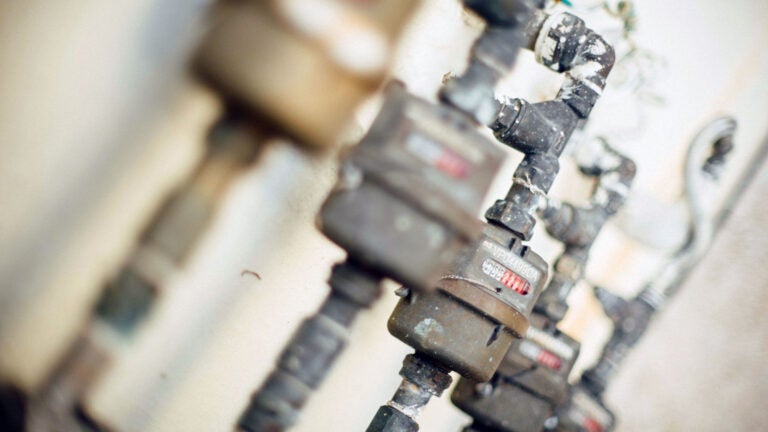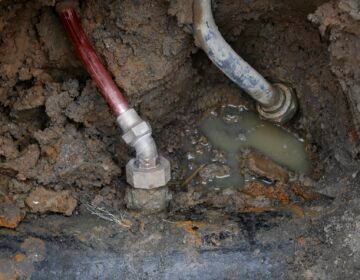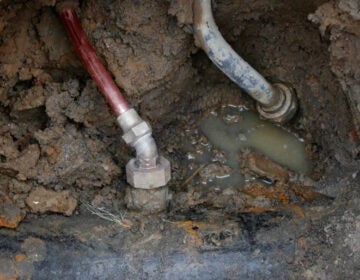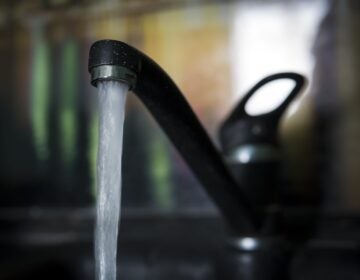What you need to know if you have lead pipes
Municipalities must locate and replace lead pipes over the next decade. Here’s what you need to know.
Listen 1:57
Lead pipes. (Chuttersnap/Unsplash)
From Philly and the Pa. suburbs to South Jersey and Delaware, what would you like WHYY News to cover? Let us know!
Philadelphia and Wilmington, along with other United States cities, shared information this week about the location of lead pipes across their neighborhoods.
The lead pipe inventories are required under new federal Environmental Protection Agency regulations mandating the removal of lead pipes over the next decade.
The regulations come a decade after the water crisis in Flint, Michigan, where lead and other contaminants leached into the city’s drinking water. Exposure to lead can cause serious health problems, including cognitive impairment among children.
There’s an estimated 20,000 to 25,000 lead service lines in Philadelphia, according to the city’s water department. There’s about 9 million lead pipes in the U.S., according to the EPA.
Andy Yencha, a water resources educator at Pennsylvania State University, and Karen Clay, a professor of economics and public policy at Carnegie Mellon University, explain what residents need to know about lead pipes.
Why should lead pipes be replaced?
Lead pipes can corrode and contaminate drinking water, putting residents at risk of lead exposure when they drink or cook.
“These are old pipes, and so if they start to corrode, or if the water authority decides to change their use of anti-corrosives, then even if you don’t currently have a lead problem, you could have a lead problem in the future,” Clay said. “Also, realistically, if you ever plan to sell your house, you want to say that your water line was replaced if it had lead.”
What are the chances of lead leaching into drinking water?
The water chemistry in a particular area may determine whether lead seeps its way into drinking water. For instance, pH level and mineral content can increase the likelihood of lead leaching from pipes, fixtures, and solder into drinking water.
Can the risk be minimized?
It takes time for lead to leach out of plumbing and make its way to peoples’ taps. Residents can minimize their risk by running their taps for at least two minutes first thing in the morning, Yencha said.
“They can flush out the water that was stagnant in the pipes that might contain lead, and bring in fresh water from the water provider, which won’t have lead in it,” he said.
Yencha also recommends running the water for at least one minute any time water has sat in the pipes for an hour or longer.
The method is not foolproof, however, and different municipalities recommend varying flushing times. For example, Pittsburgh suggests residents run their taps for one minute, while Philadelphia recommends three minutes.
“It’s not going to completely solve the problem, and the other issue is you then have to remember to run your tap every time you turn it on in the morning,” Clay said.
Yencha said if done correctly, flushing is effective in most situations, however.
Residents also should only use cold water when running their taps, as well as for drinking and cooking. Hot water is more likely to cause lead to leach out of plumbing.
What other steps can I take?
Residents can purchase a pitcher filter certified to remove lead, or install a more costly filtration system under their sink. Filters must be changed periodically in order to be effective, Yencha and Clay said.
The experts also recommend residents get their water tested for lead. Many local utilities offer to test customers’ water for free. If not, residents can find a certified lab to test their water for lead.
Clay also recommends potential home buyers request the water be tested for lead prior to purchasing the home.
What amount of lead in drinking water is safe?
The EPA states that no amount of lead is safe. However the agency’s new regulations require water systems to reduce lead concentrations to below 10 parts per billion, down from the most recent requirement of 15 parts per billion.
While ingesting lead-contaminated water puts individuals at risk of developing health problems, especially among children and pregnant people, bathing in water is considered to be safe.
How do I know what kind of pipes I have?
Residents must first locate their water meter.
The next step is to press a magnet to the pipe. If the magnet sticks, the pipe is likely made of galvanized steel.
Residents can scratch the pipe with a screwdriver to discover the type of piping material. If the pipe matches the color of a penny, the pipe is made of copper. If the pipe is a shiny silver-gray, it could be made of lead.
What if my water provider doesn’t know if I’m connected to a lead line?
Until residents can determine the composition of their service line, they should practice flushing, Yencha said.
“Lead is a toxic contaminant. The risks are significant. So, I think the best course of action is to be very prudent and try to minimize your potential exposure,” he said. “So, until you can determine what your service line is, I think taking those preventative steps is wise.”
What happens after a lead line is replaced?
Replacing lead service lines does not remove the threat completely, particularly if a home has galvanized plumbing, Yencha said. Lead particles can remain attached to galvanized plumbing, which is composed of steel.
All residents should run cold water from an outside hose spigot, utility sink or bathtub for 30 minutes after their lead pipes are removed, and continue flushing activities every three weeks.
What about internal plumbing?
Under the new EPA regulations, homeowners are still responsible for replacing their internal plumbing. The agency offers advice on how to identify lead in fixtures, and how to reduce the risk of exposure to lead.

Get daily updates from WHYY News!
WHYY is your source for fact-based, in-depth journalism and information. As a nonprofit organization, we rely on financial support from readers like you. Please give today.







